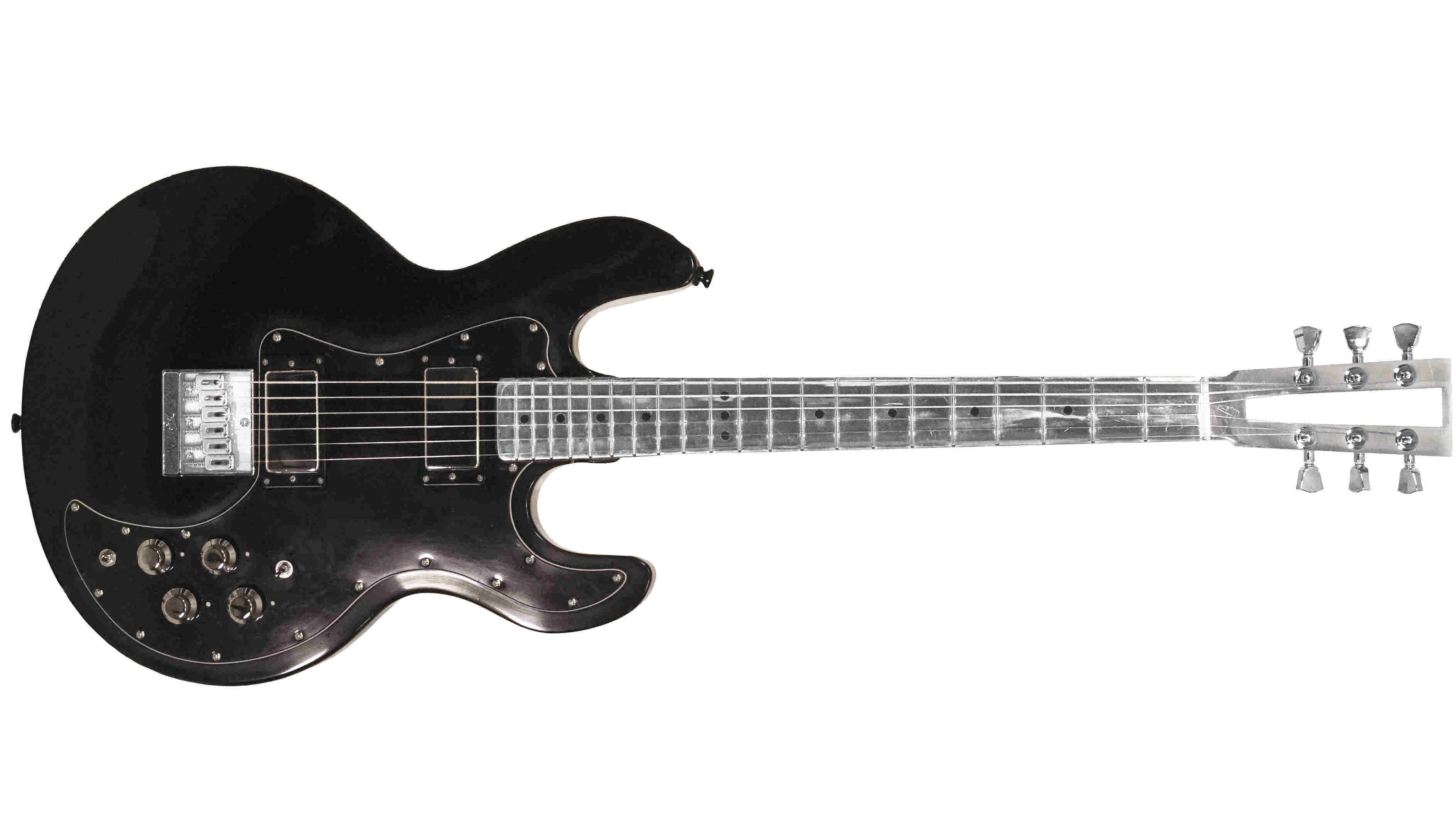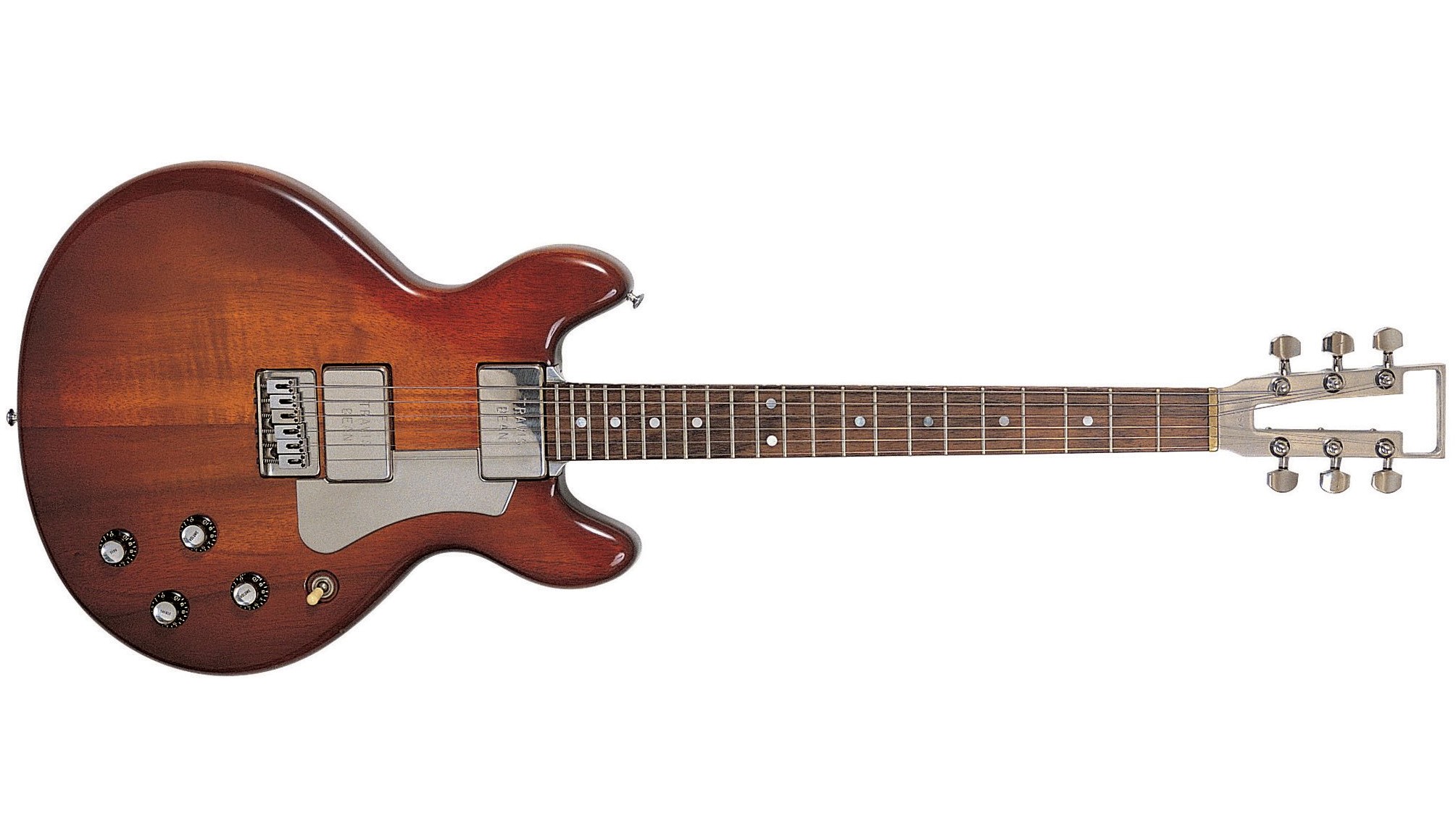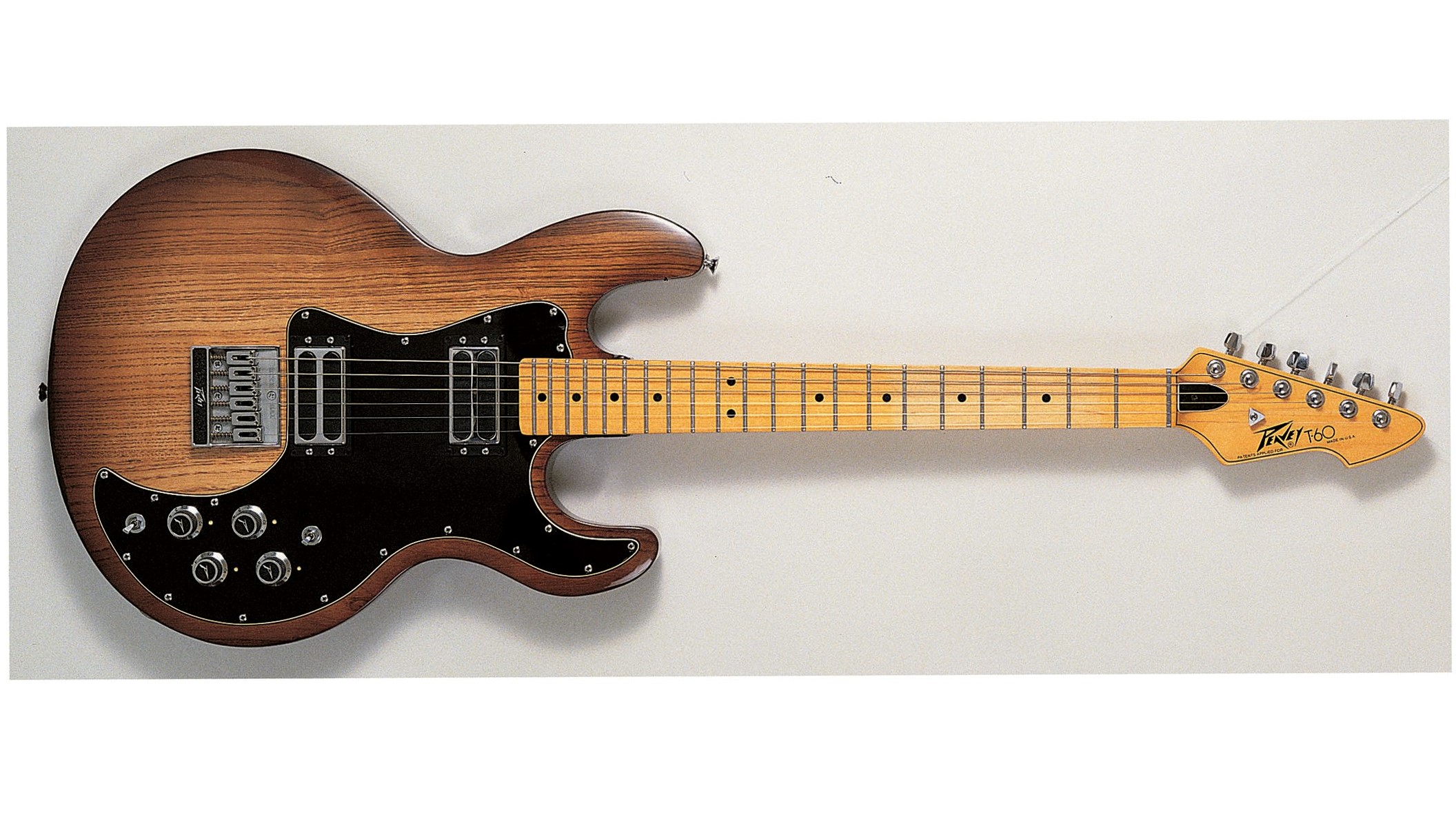There’s Way More to Custom Builds Than Fender-Style Frankencasters
Get inspired to build your own unique hybrid axe with this 1981 Peavey T-60/2018 Electrical Guitar Company mashup.

Frankencasters are typically Fender-style guitars pieced together from aftermarket parts. There are a lot of cool examples out there, but this meld of a Peavey T-60 body and a Travis Bean-style aluminum neck – a Peavey-Bean, so to speak – is something else.
Weirdo Factor
Michael Gurule, from the Starving Musician musical-instrument store in Santa Clara, California, built this electric guitar. The weirdo factor is that anyone would use a Peavey T-60 body to make a serious build. Peavey’s guitars and basses have always been terribly underrated, but the T-60 is often thoughout of as strictly squaresville. Until now, that is!
By adding a brand-new Travis Bean-inspired aluminum neck from the Electrical Guitar Company, this custom guitar now looks menacing, aggressive and irresistible to play.

Playability & Sound
This guitar’s 21-fret neck with Grover Keystone Rotomatic tuning machines is a joy. Temperature-wise, it’s cool to the touch, which is fun, but the playability is the real surprise. It’s slender, fast and easy. Surprisingly, the neck doesn’t make the guitar feel top heavy, though the overall weight of the instrument is in the upper Les Paul range at just over 11 pounds.
Michael swapped out the original Peavey pickups in favor of some old DiMarzio humbuckers: a Super Distortion in the bridge position and a PAF in the neck. Let’s just say this guitar is loud and has sustain for days.
All the latest guitar news, interviews, lessons, reviews, deals and more, direct to your inbox!
The tones are bright, due in part to the aluminum neck, but in a good way. The bridge pickup sound is gainy, with lots of sustain, and while the neck is more trebly than you might expect – what a lot of us refer to as a “British” distortion – it’s cool for clean tones as well. The middle pickup position is surprisingly warm and full, with or without distortion.

Pulling up on the volume knob engages the coil tap, producing a clean tone that is almost acoustic sounding, but with distortion there is a high-end bite that still somehow manages to retain a certain creaminess. Overall, these pickups go quite well with the density of the northern ash body and the solidity of the aluminum neck.
The original wiring was left fairly standard, with a volume and tone knob for each pickup and 500k CTS pots with Orange Drop capacitors. The back toggle, which Peavey used as coil tap, is now a kill switch, which is a feature we’d like to see on more guitars.
Value
Building a guitar piece by piece is not unlike building a car – that is, expensive! However, Michael spent only about $1,100, of which $750 was spent on just the neck.
Why It Rules
While it’s made from available recycled and aftermarket parts, the guitar is still quite unique in its sound and look, but it’s not so odd that you couldn’t do a whole gig with it.
Click here for more information on the excellent Electrical Guitar Company.
Thanks to Michael Gurule for the loan of this awesome custom axe.
